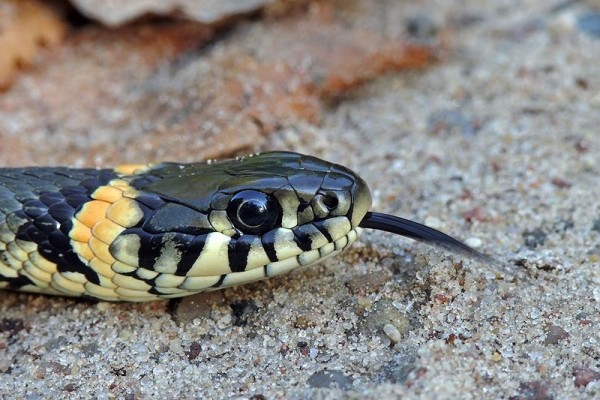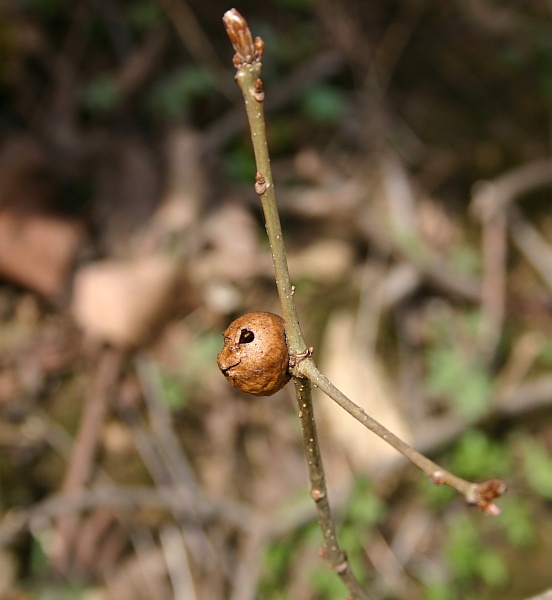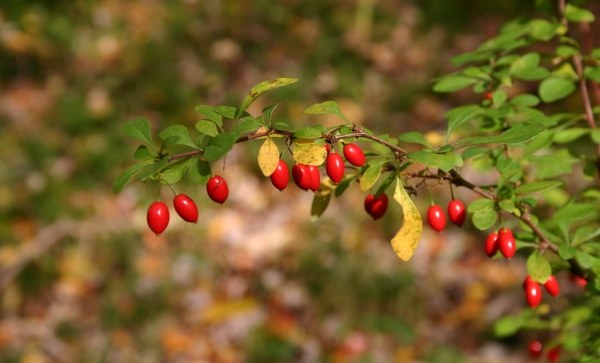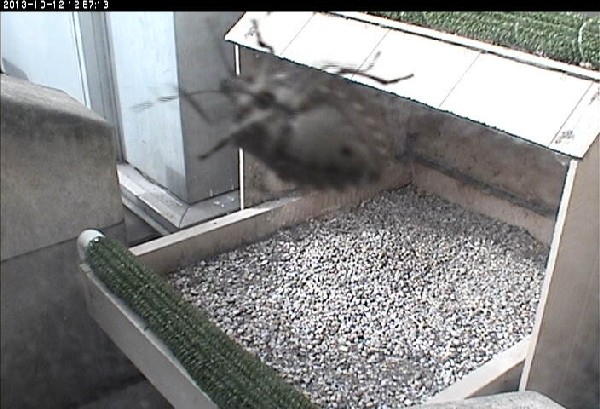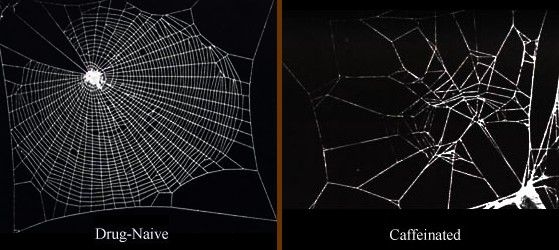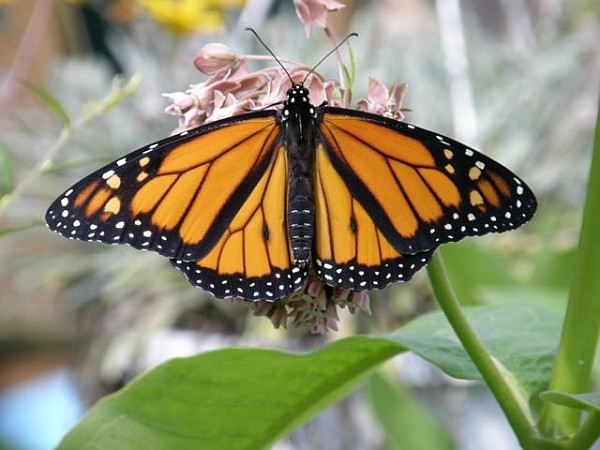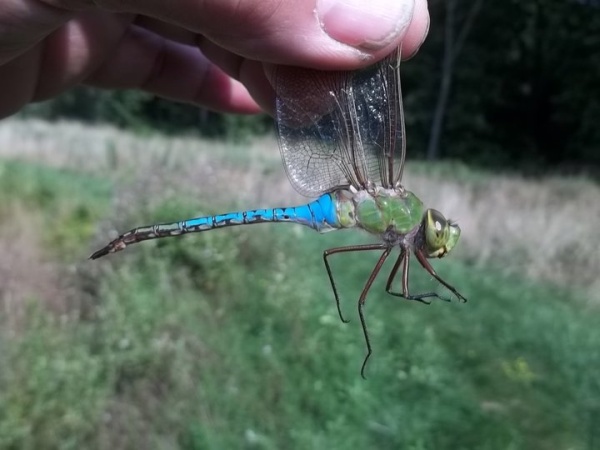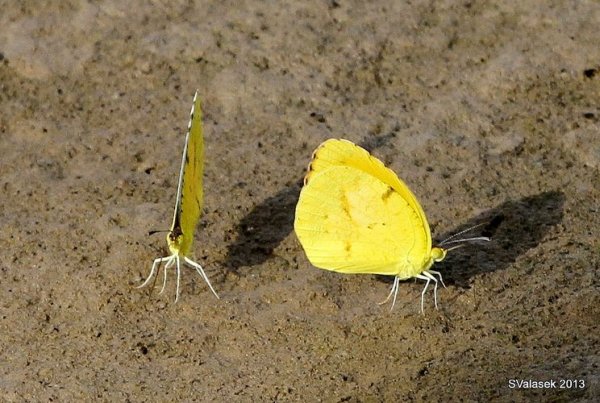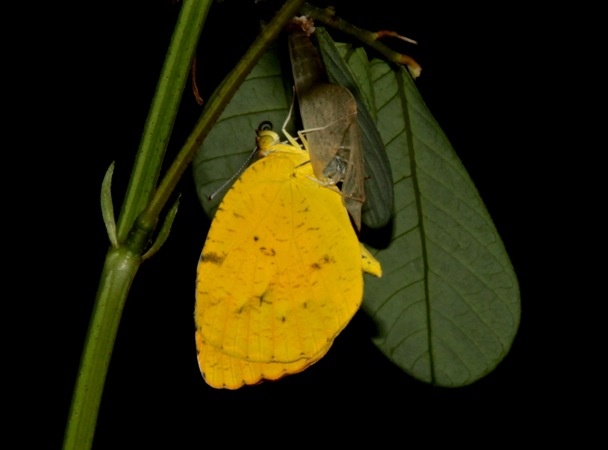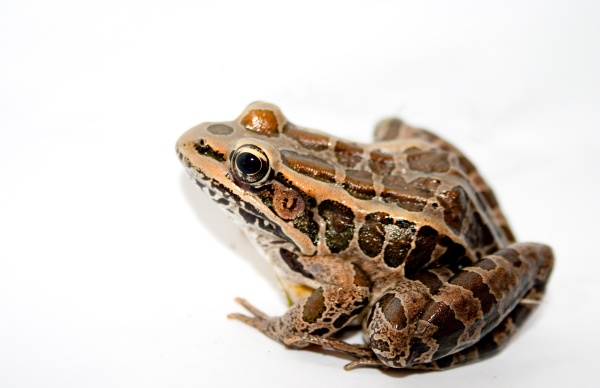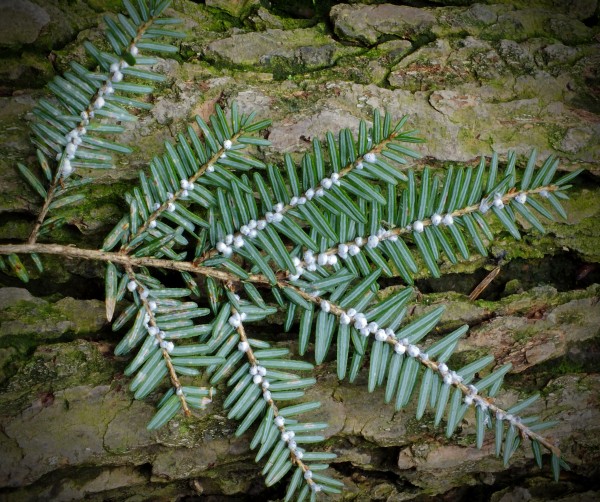
Last spring the hemlock woolly adelgid (HWA) reached Cooks Forest, scary news for the old-growth eastern hemlocks there.
The pest is easy to recognize by its white egg sacs that cling to the underside of the branches. They kill hemlocks by sucking the juice out of the needles. Infected trees look gray-green instead of deep green and, under a heavy infestation like the one shown above, can die in only four years. This is sad anywhere but especially unfortunate in Cooks Forest where the old growth hemlocks are over 300 years old.
It has taken a long time for the bug to reach Cooks Forest. HWA arrived from Asia in 1924 but moved very slowly across the eastern U.S. By 2007 it was present in 50% of the eastern hemlock’s range, unable to spread far northward because of harsh winters. Unfortunately our climate is warming so new adelgid territory opens up every year. (Notice on this NOAA plant hardiness map that the location of Cooks Forest warmed enough to change growing zones.)
HWA was first spotted in eastern Pennsylvania in 1967 but took about four decades to cross the Allegheny Front into western PA. Slowly, slowly it crept toward Cooks Forest. By 2010 it was in the vicinity. This year it was there.
Knowing the imminent danger DCNR has treated the area and the old growth trees. They use biological controls — Asian beetles that eat adelgids, though not enough of them — and soil or bole-injected insecticides on specific trees. The poisons are systemic, similar in concept to the insecticide treatments for emerald ash borer that kill or repel all insects. The treated trees will have fewer insects living on them. Will this make them less useful to birds?
The question hardly matters. Nature can’t produce a 300 year old hemlock as fast as the adelgids can destroy one. In the case of our oldest treasures our task is clear. Save these trees if we can.
For more information on the hemlock woolly adelgid, click here for DCNR’s report.
(photo via Wikimedia Commons by Nicholas A. Tonelli at Jacobsburg, Northampton County, PA. Click on the image to see the original)
p.s. Thanks to Kim Getz for alerting me to this news. Because of the adelgids activity cycle, DCNR treated the old-growth trees in May and again in October.
